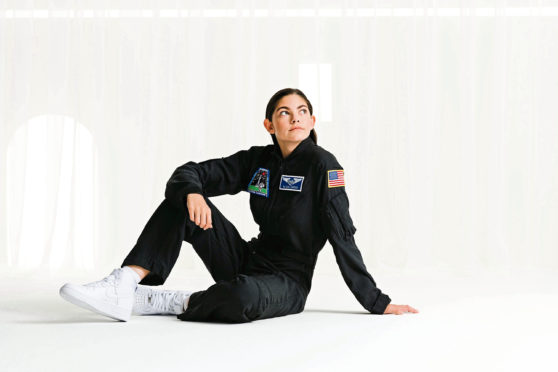
Most teenagers have ambitions to travel the world, but few can realistically hope to travel the stars.
At just 18 years old, astronaut-in-training Alyssa Carson seems almost certain to become the youngest person ever in space, and has already made it her life’s ambition to man the first mission to Mars.
She’s already released a book, spoken at the Dublin tech summit, and even has her own NASA call sign, Blueberry, named for the replica flight suit she wore at her many space camps.
“In the NASA selection process, 18,000 apply and only 12 get picked, so it can be pretty intense,” reveals Carson.
“I’m currently working with a citizen science research programme called Project PoSSUM, studying Earth’s upper atmosphere, and I’m now certified to do a research mission in sub-orbital space.
“If things come together, I could be on one of their research missions and get my astronaut wings at the same time.
“Ultimately my main goal has always been the mission to Mars, but that wouldn’t be until the 2030s.
“The youngest astronaut ever was 25 – that was a Russian – and the youngest American ever was 32,” adds Carson.
What first fired her enthusiasm for space?
“I was around three, and I watched a Nickleodeon cartoon called The Backyardigans. On one of their adventures, they went to Mars in a little space shuttle.
“My dad remembers me asking all these questions about space and about Mars, and my passion grew from there.
“When I was nine years old, I met astronaut Sandra Magnus. I told her that I wanted to be an astronaut and asked when she first decided to become one, and she told me she had been around nine too.
“That simple conversation really motivated me, and showed me that you can decide what you want at a young age, work hard and make it a reality.
“I love speaking to kids – the first speech I gave was just blabbering about space history to a bunch of kids at camp,” continues Carson.
“It’s a passion of mine to see kids’ faces light up when you talk about space, and encourage them to get involved. There are lots of jobs you don’t hear about.
“My dad and my family have always been super supportive.
“Obviously when I was three, my dad didn’t know what I’d be doing at 18, but he would buy me books and posters about space and it’s been really wonderful to have him travel with me.
“As for my friends, they don’t really care much. They do support me but we don’t really talk about space –we’re normal teenagers!”
A lot of astronauts talk about the emotional toll of being so isolated for so long.
“Definitely the hardest part about a mission to Mars would be willingness to leave family and friends, and for astronauts mental training is just as important as physical training,” admits Carson.
“The way I think about it is that there are many people on Earth doing similar things – people in the military shipped off for months on end, people that work in different countries… I think humans have that strength.”
Mars is clearly the dream, but life there seems pretty bleak. How much does she know about the reality?
“With the mission not even planned until the 2030s, there’s still a bunch of different ideas. Mars has lava tubes (caverns within solidified lava) like those in Iceland, so researchers in Iceland have tested using pressurised lava tubes as a habitat to protect from radiation.
“Certainly space isn’t a friendly place to visit, but having learned so much about it, it now feels like a norm. The people who work in the industry are very passionate about what they do and everything revolves around astronaut safety, so I feel in good hands.
“I just hope the mission is a global, united effort. Hopefully the mission can have an astronaut from NASA and a cosmonaut from the Russian Space Agency – the world going to Mars, not one company or agency.”


Enjoy the convenience of having The Sunday Post delivered as a digital ePaper straight to your smartphone, tablet or computer.
Subscribe for only £5.49 a month and enjoy all the benefits of the printed paper as a digital replica.
Subscribe